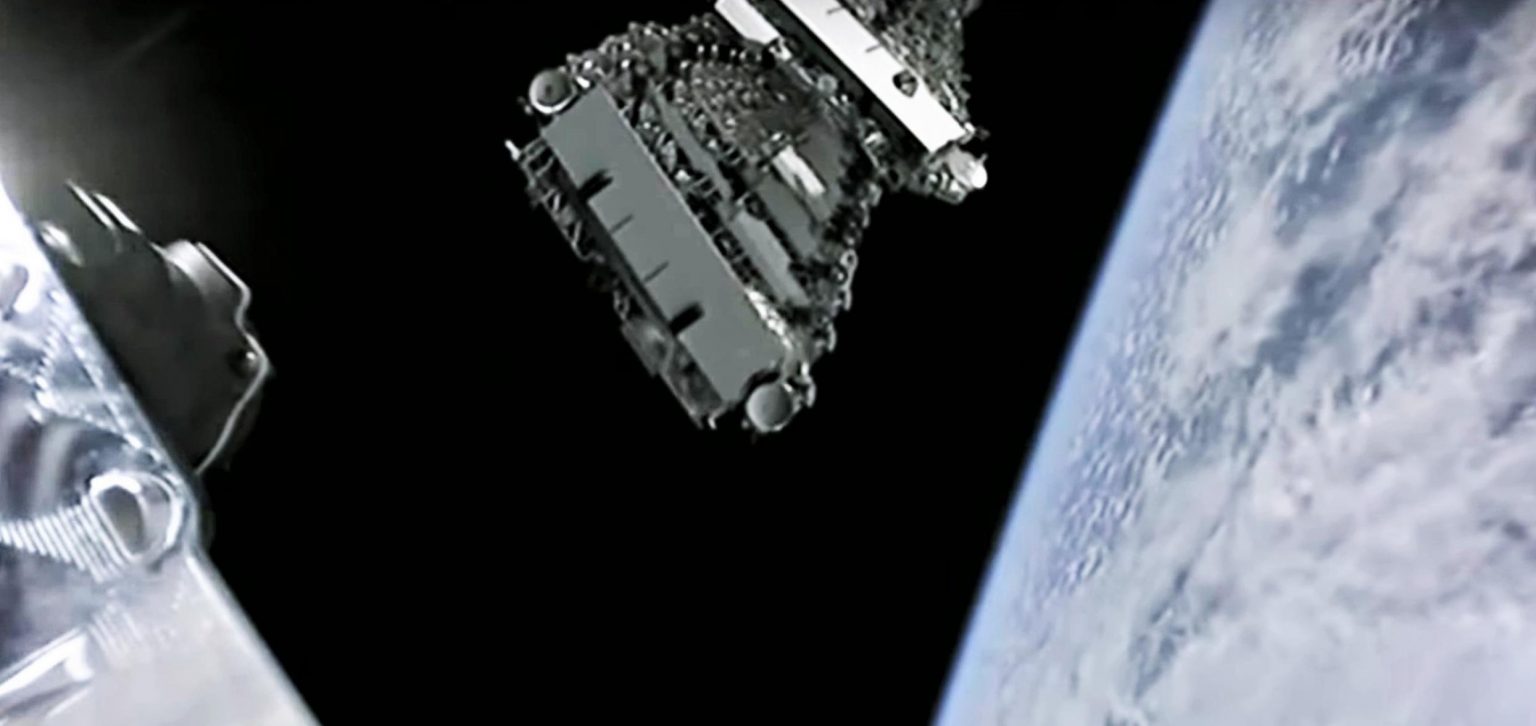Trains of ‘Starlink’ Satellites Spreading Across Night Sky

Deployment of the first StarLink Satellites, February 2020.
After a soggy day last month, the night sky cleared and the mud dried so I went for a nighttime walk. Stepping out from the forest at one point and looking up there was a very unusual sight like I have never experienced before. In the eastern sky there was a train-like parade of satellites. Turns out they are part of SpaceX’s Starlink constellation which had been launched five days earlier aboard one of the company’s Falcon 9 rockets.
Satellites traveling in formation is nothing new. Years ago, from the back yard, the space shuttle and Russian space station Mir played celestial tag overhead in the early days of international space cooperation. Later on, the space shuttle and its supply craft were observed flying in formation with the International Space Station as new crews, equipment and provisions arrived on orbit. Some defense and intelligence satellites known to travel in unusual configurations have also been observed. None of these, including the Starlink satellites, requires any optical aid to view when they are against a dark sky and illuminated by sunlight.
I counted 18 distinct satellites during the observed passage. Turns out there were actually 60 satellites from a single launch in the train! Some were already too low and faint to see and some stragglers likely appeared once I had ducked back into the trees.
Although a startling sight, those satellites were from SpaceX’s fifth Starlink launch so far this year, each placing 60 satellites into low Earth orbit. Additionally, there were two Starlink launches last year. According to the SpaceFlightNow.com web site at the time of writing, the eighth pack of 60 Starlink satellites is scheduled to be launched from Florida’s Cape Canaveral Air Force Station later this month on May 7.
Eventually, SpaceX plans to place some 12,000 Starlink satellites into Earth orbit. Assuming 60 per launch, 200 launches will be needed. Once a batch has been launched into its release orbit, each satellite uses a krypton ion thruster to slowly raise it to an average operational orbital altitude of 341 miles. As they rise, they will also spread out along the orbital path.
The purpose of Starlink is to provide high bandwidth Internet broadband service. According to publicity, the completed constellation will provide uninterrupted internet service in underserved rural areas and ocean surfaces. Users will need to procure a specialized flat antenna the size of a “medium pizza box” to connect to the Internet via the satellites. Like Starlink and its Falcoln 9 rocket, the antenna is also being developed by SpaceX.
But there is another advantage that SpaceX hopes will make Starlink a big money maker with financial customers and international stock exchanges. The satellites route data through each other using laser beams in the vacuum of space. Currently, the fastest available international communication is through fiber optic sea cables. Because light travels more slowly through glass than in a vacuum, Starlink users can potentially enjoy a decrease in latency measured in mere milliseconds, giving them a slight advantage in the speed at which their buy and sell orders are received.
The Starlink system is also creating headaches for astronomers who fear that the thousands of new satellites in low Earth orbit will create havoc on space studies. Even amateur astronomers are dreading the spreading Starlink constellation.
The American Astronomical Society (AAS) is working with SpaceX to reduce astronomical interference. Two experiments will involve using darker paint on satellites and the use of sun shades or parasols to reduce the level of interference from reflected light. However, paint is a tried and true method of passive thermal control. It’s possible that the darker paint might result in increased heating that could have an adverse effect. Time will tell what long term impact Starlink will have on astronomy.
Anyone interested in observing the Starlink satellites, especially for tracking the upcoming May launch, should consult the web site Heavens-Above.com. The web site has a new section just for predicting visibility of Starlink satellite passages. But first, web site users must set their observing location. Otherwise, the web site defaults to the point on the Atlantic where the Prime Meridian meets the Equator.
–Curt Roelle
